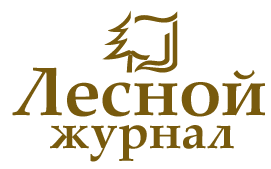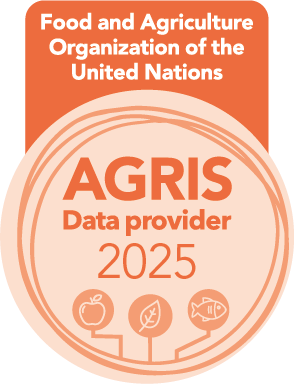

Address: Naberezhnaya Severnoy Dviny, 17, Arkhangelsk, 163002, Russian Federation, Northern (Arctic) Federal University named after M.V.Lomonosov, office 1425
Phone: +7 (8182) 21-61-18
E-mail: forest@narfu.ru
http://lesnoizhurnal.ru/en/
|
Adaptation Features of Kamchatka Bilberry (Vaccinium praestans Lamb.) Plants Grown in vitro. С. 121-131
|
 |
Sungurova N.R., Makarov S.S., Chudetsky A.I., Cheryatova Yu.S.
UDС
634.739
DOI:
10.37482/0536-1036-2025-3-121-131
Abstract
Currently, the demand for berry products with high nutritional and medicinal value is increasing. To preserve biodiversity and industrial propagation, it is necessary to grow plants in vitro and create a gene bank. Kamchatka bilberry (Vaccinium praestans Lamb.) is one of the valuable and rare forest berry plants, which requires the improvement of accelerated propagation technologies for further cultivation. The aim of the study has been to investigate the adaptation features of in vitro propagated V. praestans plants under ex vitro conditions and in open ground. The objects of the study have been V. praestans plants (2 hybrid forms and 3 selected forms from natural populations) obtained by the in vitro method. Morphometric parameters of the regenerated plants have been taken into account under ex vitro conditions when grown on various substrates (high-moor peat; peat + river sand 3:1; peat + vermiculite 3:1; peat + perlite 3:1; peat + zeolite 3:1) treated with aqueous solutions of growth stimulants (Zircon 0.5 ml/l; Epin-extra 0.5 ml/l). When adapting ex vitro, the highest survival rates (90 %), number of shoots (3.8 pcs. on average) and number of leaves (5.1 pcs. on average) of the V. praestans regenerated plants on the 28th day after transplantation have been revealed on a substrate made of a mixture of peat and zeolite (3:1) when treated with Epin-extra 0.5 ml/l. For the first time, the morphometric parameters and yield dynamics of V. praestans plants obtained by clonal propagation have been studied in open ground conditions in the natural and climatic conditions of Moscow, the Kostroma Region and the Khabarovsk Territory. The maximum shoot length in 2022–2023 was recorded in hybrid form 235261 (7.0–7.4 cm on average). The highest yield of 2–5-year-old V. praestans plants in open ground conditions has been noted in hybrid forms (362.75–383.0 g/m2 on average) and has varied depending on the growing area.
Affiliation
1Northern (Arctic) Federal University named after M.V. Lomonosov, Naberezhnaya Severnoy Dviny, 17, Arkhangelsk, 163002, Russian Federation; n.sungurova@narfu.ru*
2Russian State Agrarian University – Moscow Timiryazev Agricultural Academy, ul. Timiryazevskaya, 49, Moscow, 127550, Russian Federation; s.makarov@rgau-msha.ru, chudetski@rgau-msha.ru, u.cheryatova@rgau-msha.ru
KeywordsKamchatka bilberry, Vaccinium praestans, adaptation, ex vitro, survival rate, introduction, morphometric parameters, yield
For citation
Sungurova N.R., Makarov S.S., Chudetsky A.I., Cheryatova Yu.S. Adaptation Features of Kamchatka Bilberry (Vaccinium praestans Lamb.) Plants Grown in vitro. Lesnoy Zhurnal = Russian Forestry Journal, 2025, no. 3, pp. 121–131. https://doi.org/10.37482/0536-1036-2025-3-121-131
References
- Albert N.W., Iorizzo M., Mengist M.F., Montanari S., Zalapa J., Maule A., Edger P.P., Yocca A.E., Platts A.E., Pucker B., Espley R.V. Vaccinium as a Comparative System for Understanding of Complex Flavonoid Accumulation Profiles and Regulation in Fruit. Plant Physiology, 2023, vol. 192, iss. 3, pp. 1696–1710. https://doi.org/10.1093/plphys/kiad250
- Alsharairi N.A. Experimental Studies on the Therapeutic Potential of Vaccinium Berries in Breast Cancer – A Review. Plants, 2024, vol. 13, no. 2, art. no. 153. https://doi.org/10.3390/plants13020153
- Chehri A., Yarani R., Yousefi Z., Shakouri S.K., Ostadrahimi A., Mobasseri M., Araj-Khodaei M. Phytochemical and Pharmacological Anti-Diabetic Properties of Bilberries (Vaccinium myrtillus), Recommendations for Future Studies. Primary Care Diabetes, 2022, vol. 16, iss. 1, p. 27–33. https://doi.org/10.1016/j.pcd.2021.12.017
- Chudetsky A.I., Rodin S.A., Zarubina L.V., Kuznetsova I.B. Adaptation of Varietal Planting Material of Lingonberry to Non-Sterile Conditions ex vitro for Growing on Non-Forest Lands. Lesokhozyajstvennaya informatsiya = Forestry Information, 2021, no. 4, pp. 106– 113. (In Russ.). https://doi.org/10.24419/LHI.2304-3083.2021.4.08
- Chudetsky A.I., Rodin S.A., Zarubina L.V., Kuznetsova I.B., Tyak G.V. Clonal Micropropagation and Peculiarities of Adaptation to ex vitro Conditions of Forest Berry Plants of the Genus Vaccinium. Tekhnika i tekhnologiya pishchevykh proizvodstv = Food Processing: Techniques and Technology, 2022, vol. 52, iss. 3, pp. 570–581. (In Russ.). https://doi.org/10.21603/2074-9414-2022-3-2386
- Dospekhov B.A. Field Experiment Methodology (with the Basics of Statistical Processing of Research Results): Textbook. Moscow, Al’yans, 2011. 350 p. (In Russ.).
- Dunford N.T. Blueberries and Health. Functional Food Science, 2022, vol. 2 (1), pp. 1–15. https://doi.org/10.31989/ffs.v2i1.875Golovinskaia O., Wang C.K. Review of Functional and Pharmacological Activities of Berries. Molecules, 2021, vol. 26, no. 13, art. no. 3904. https://doi.org/10.3390/molecules26133904
- Kopystecka A., Kozioł I., Radomska D., Bielawski K., Bielawska A., Wujec M. Vaccinium uliginosum and Vaccinium myrtillus – Two Species – One Used as a Functional Food. Nutrients, 2023, vol. 15, no. 19, art. no. 4119. https://doi.org/10.3390/nu15194119
- Kowalska K. Lingonberry (Vaccinium vitis-idaea L.) Fruit as a Source of Bioactive Compounds with Health-Promoting Effects – A Review. International Journal of Molecular Sciences, 2021, vol. 22, no. 10, art. no. 5126. https://doi.org/10.3390/ijms22105126
- Krasikova V.I. Biology and Rational Use of Kamchatka Bilberry (Vaccinium praestans Lamb.) on Sakhalin. Vladivostok, Far East Scientific Centre of the USSR Academy of Sciences Publ., 1987. 108 p. (In Russ.).
- Kryshnyaya S.V., Krasikova V.I. Chemical Composition of Fruits and Leaves of Vaccinium praestans. Terrestrial Ecosystems of Sakhalin Island: Current State, Natural and Anthropogenic Changes, Protection and Rational Use of Natural Resources. Yuzhno-Sakhalinsk, 1999, pp. 121–128. (In Russ.).
- Makarov S.S., Antonov A.M., Kulikova E.I., Chudetsky A.I., Solovyov A.V. Biotechnology in Horticulture. Growing Fruit and Rare Berry Plants in in vitro Culture. Laboratory Practical Training: Manual. St. Petersburg, Lan’ Publ., 2023. 128 p. (In Russ.).
- Makarov S.S., Chudeсkiy A.I., Cheryatova Yu.S., Kuznetsova I.B. Kamchatka Bilberry (Vaccinium praestans Lamb.): Testing Methodology Development for Distinctiveness, Homogeneity and Stability. Vestnik KrasGAU = Bulletin of Krasnoyarsk State Agrarian University, 2024, no. 5, pp. 42–51. (In Russ.). https://doi.org/10.36718/1819-4036-2024-5-42-51
- Makarov S.S., Rodin S.A., Kuznetsova I.B., Chudetsky A.I., Tsaregradskaya S.Yu. Effect of Light on Rhizogenesis of Forest Berry Plants during Clonal Micropropagation. Tekhnika i tekhnologiya pishchevykh proizvodstv = Food Processing: Techniques and Technology, 2021, vol. 51, iss. 3, pp. 520–528. (In Russ.). https://doi.org/10.21603/2074-9414-2021-3-520-528
- Makarov S.S., Upadyshev M.T., Kuznetsova I.B., Zaushintsena A.V., Kulikova E.I., Surina E.A. The Use of Lighting of Various Spectral Ranges for Clonal Micropropagation of Forest Berry Plants. Lesnoy Zhurnal = Russian Forestry Journal, 2022, no. 6, pp. 82–93. (In Russ.). https://doi.org/10.37482/0536-1036-2022-6-82-93
- Mirghani M.E.S., Daoud J.I., Elnour A.A.M. Wild Species of Vaccinium Composition, Nutritional Value and Utilization. Wild Fruits: Composition, Nutritional Value and Products. Springer, Cham, 2019, pp. 523–537. https://doi.org/10.1007/978-3-030-31885-7_39
- Plaksen N.V., Stepanov S.V., Ustinova L.V. Hepatoprotective Effect of Vaccinium praestans Syrup. Tikhookeanskij meditsinskij zhurnal = Pacific Medical Journal, 2014, no. 2, pp. 59–61. (In Russ.).
- Prieto Martínez A., Coutiño Diaz M., Anaya Romero L., Ali Redha A., Zare R., Ventura Hernandez S., Prokopidis K., Clifford T. Effects of Vaccinium Berries (Blueberries, Cranberries and Bilberries) on Oxidative Stress, Inflammation, Exercise Performance, and Recovery – a Systematic Review. Food & Function, 2024, iss. 15, pp. 444–459. https://doi.org/10.1039/d3fo04435a
- Salikova A.A., Ponomarchuk S.G., Plaksen N.V., Ustinova L.V., Stepanov S.V., Zheludkova N.N. Amino Acid Composition of Fruits Representing the Far Eastern Flora. Dal’nevostochnyj meditsinskij zhurnal = Far Eastern Medical Journal, 2023, no. 2, pp. 69–73. (In Russ.). https://doi.org/10.35177/1994-5191-2023-2-12
- Salikova A.A., Ponomarchuk S.G., Plaksen N.V. Study of the Chemical Composition of Fruits of Far Eastern Plant Species of the Heather Family (Ericaceae). Tikhookeanskij meditsinskij zhurnal = Pacific Medical Journal, 2021, no. 3, pp. 40–44. (In Russ.). https://doi.org/10.34215/1609-1175-2021-3-40-44
- Salikova A.A., Ustinova L.V., Plaksen N.V., Stepanov S.V. Influence of Weather Conditions on the Accumulation of Antioxidants in the Fruits of Vaccinium praestans. Problemy regional’noj ekologii = Regional Environmental Issues, 2019, no. 5, pp. 6–10. (In Russ.). https://doi.org/10.24411/1728-323X-2019-17006
- Sedov E.N., Ogoltsova T.P. (eds.). Program and Methodology for Studying Varieties of Fruit, Berry and Nut Crops. Oryol, All-Russian Research Institute of Fruit Crops Breeding Publ., 1999. 606 p. (In Russ.).
- Smirnov I.Yu. Kamchatka Bilberry. Nauka i zhizn’, 1999, no. 10, pp. 49–52. (In Russ.).
- Smirnov I.Yu. Productivity of Lingonberry under Cultivation Conditions. Plodovodstvo i yagodovodstvo Rossii = Pomiculture and Small Fruits Culture in Russia, 2003, vol. 10, pp. 352–357. (In Russ.).
- Stanienė G., Stanys V., Kawecki Z. Peculiarities of Propagation in vitro of Vaccinium vitis-idaea L. and V. praestans Lamb. Biologija, 2002, vol. 48, no. 1, pp. 84–86.
|
Make a Submission


Lesnoy Zhurnal (Russian Forestry Journal) was awarded the "Seal of Recognition for Active Data Provider of the Year 2025"

|







